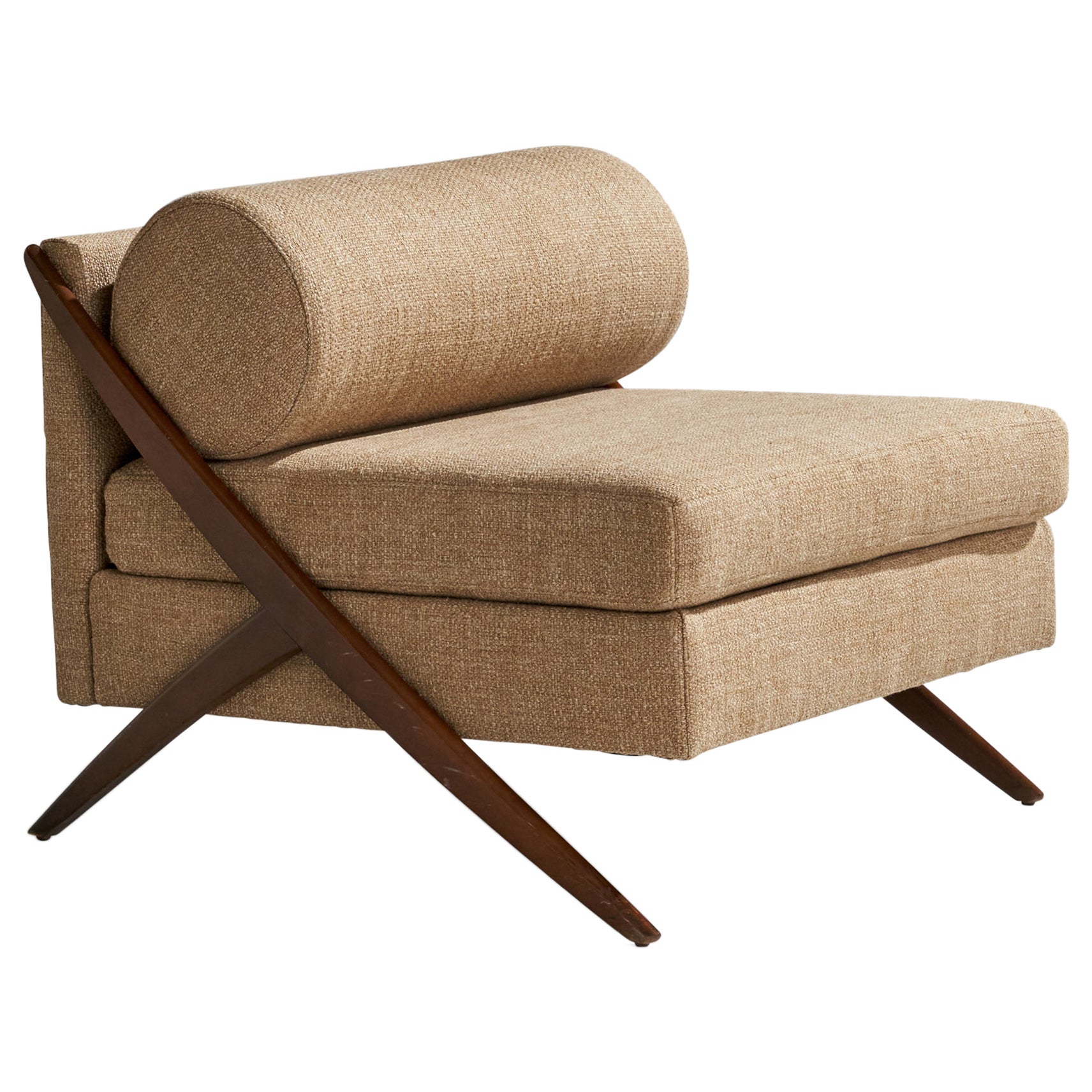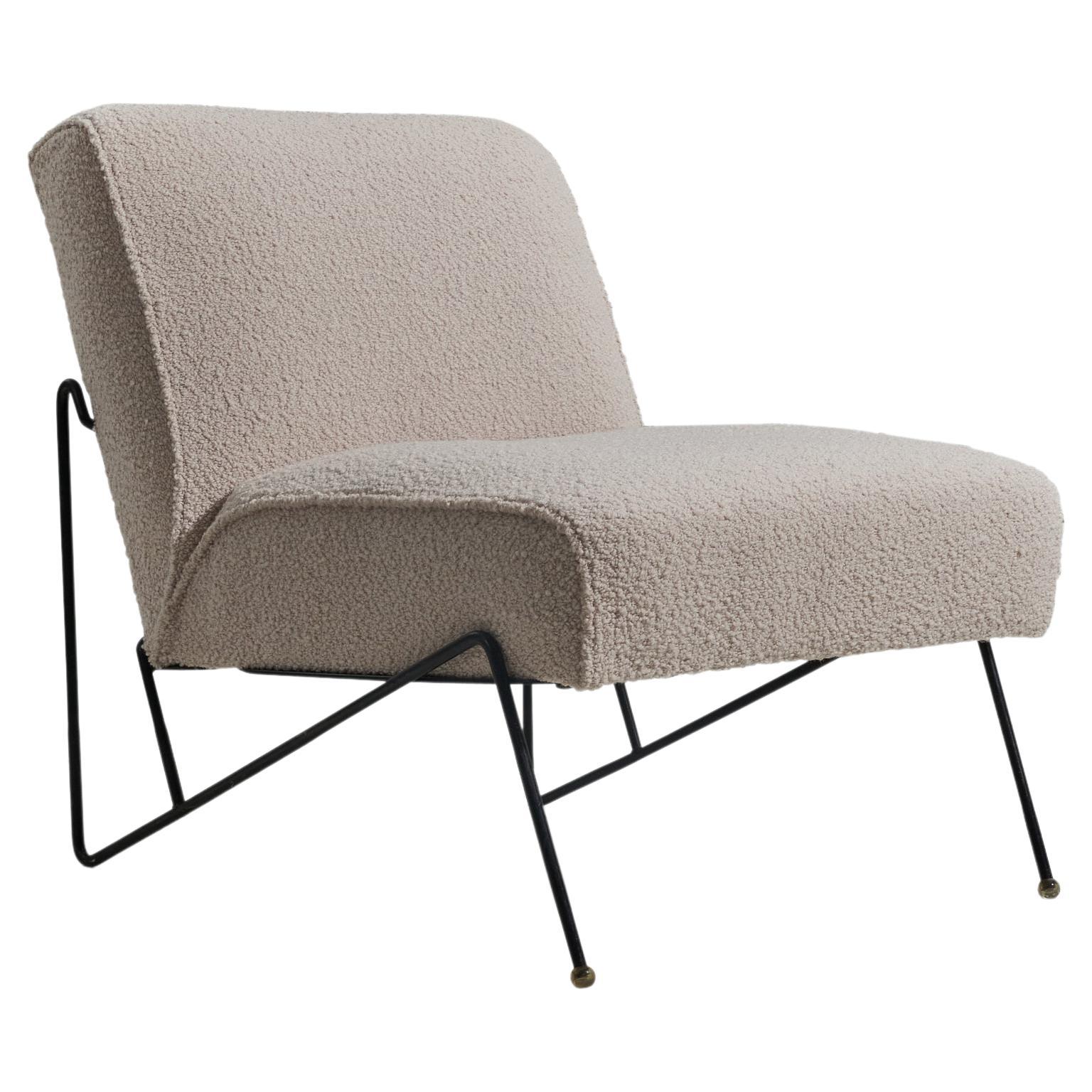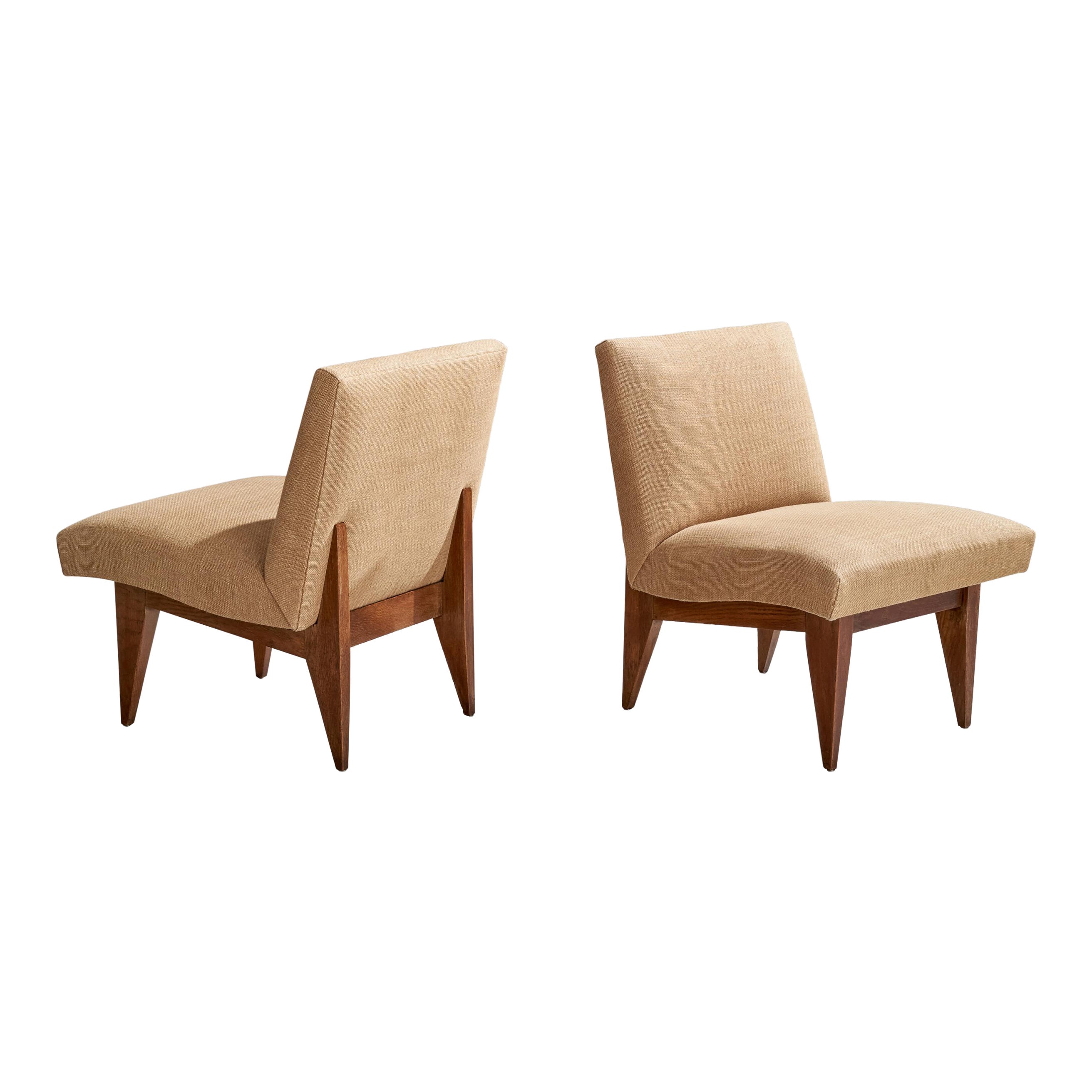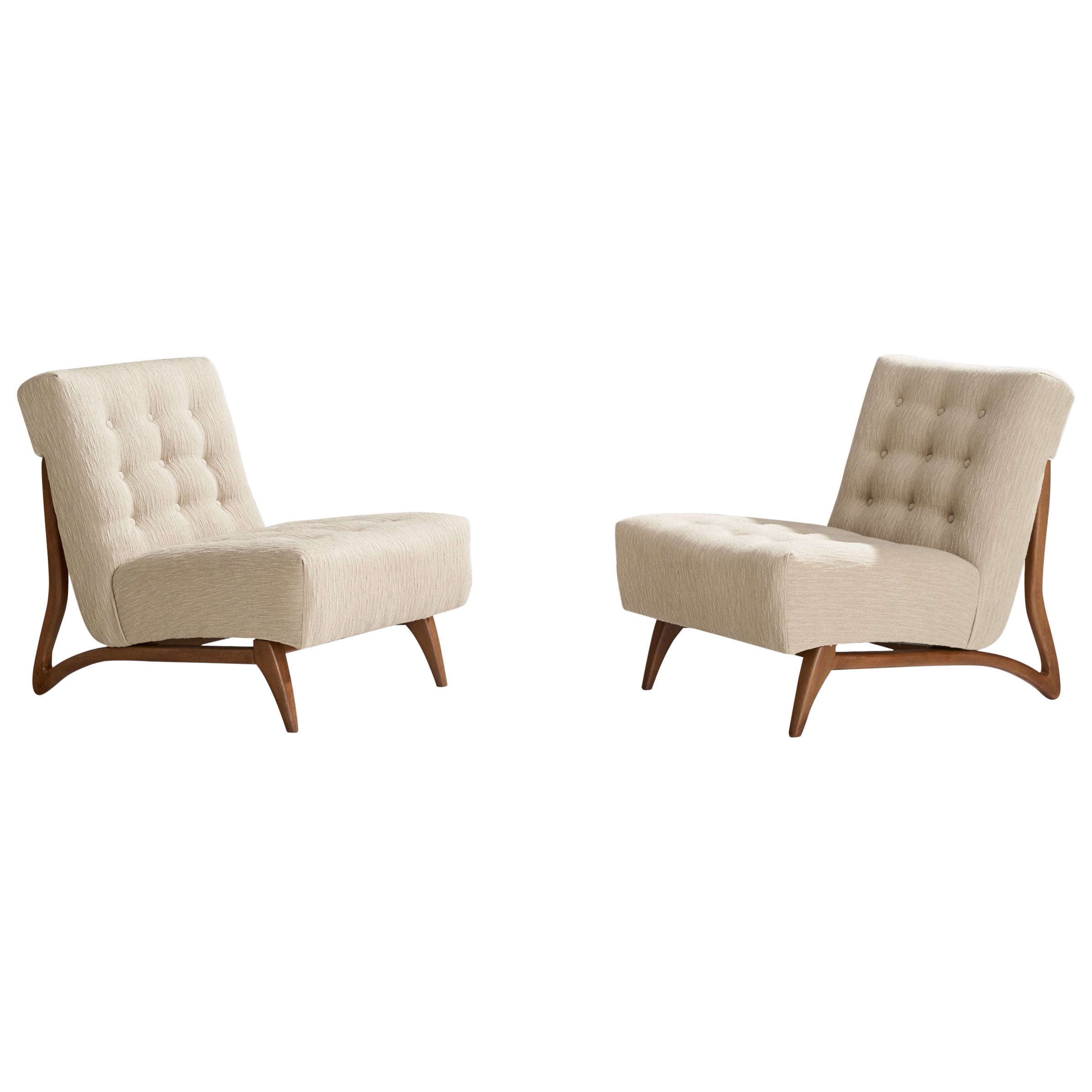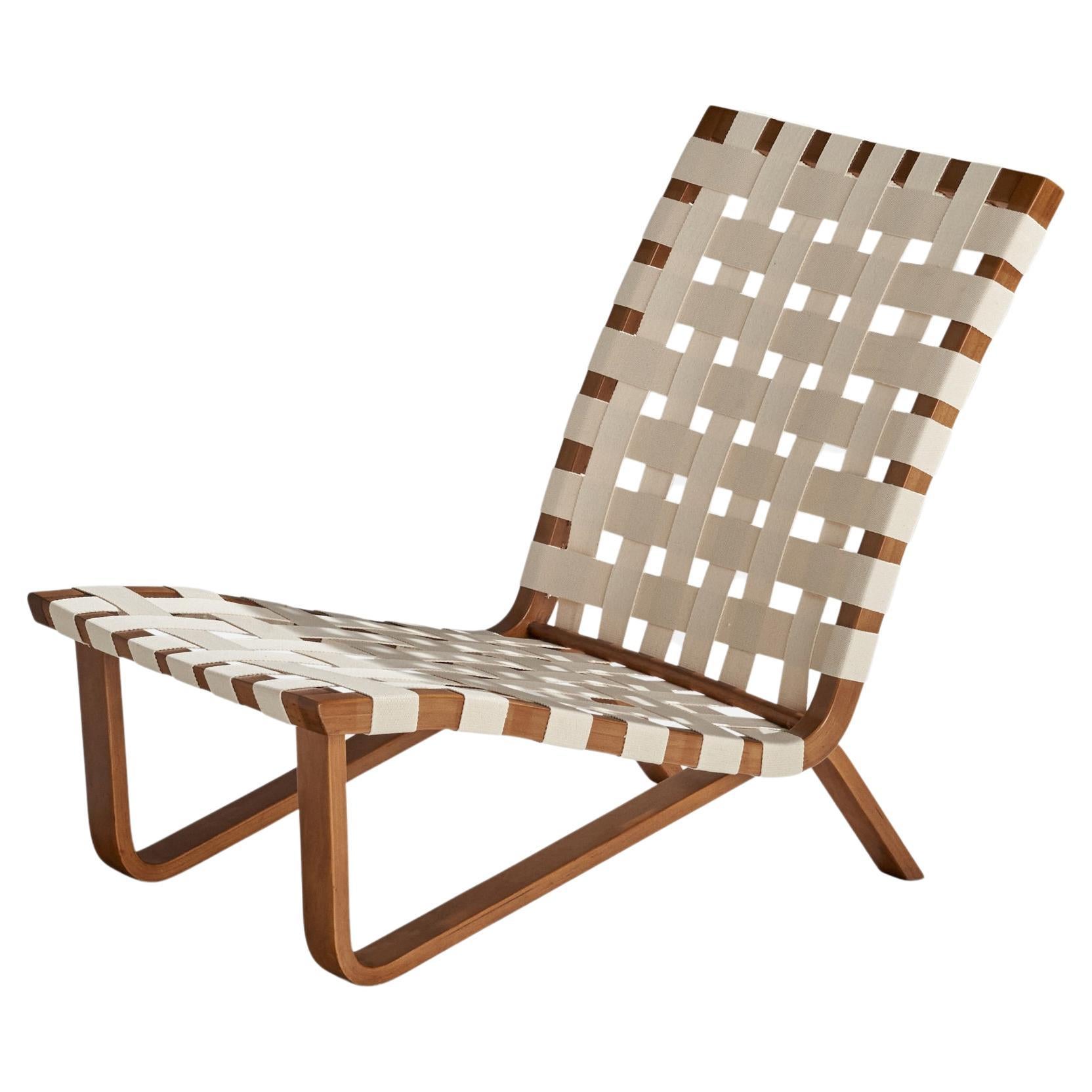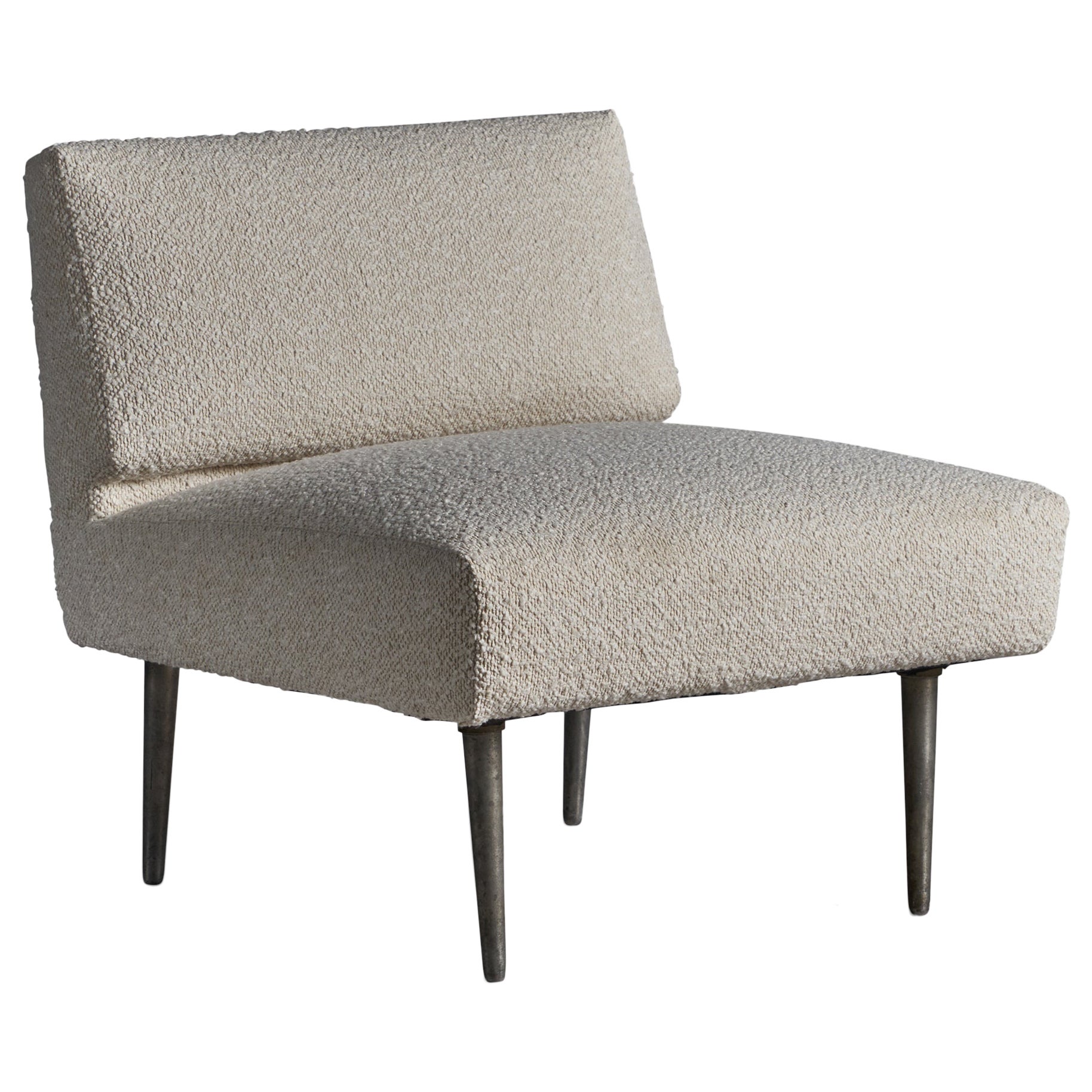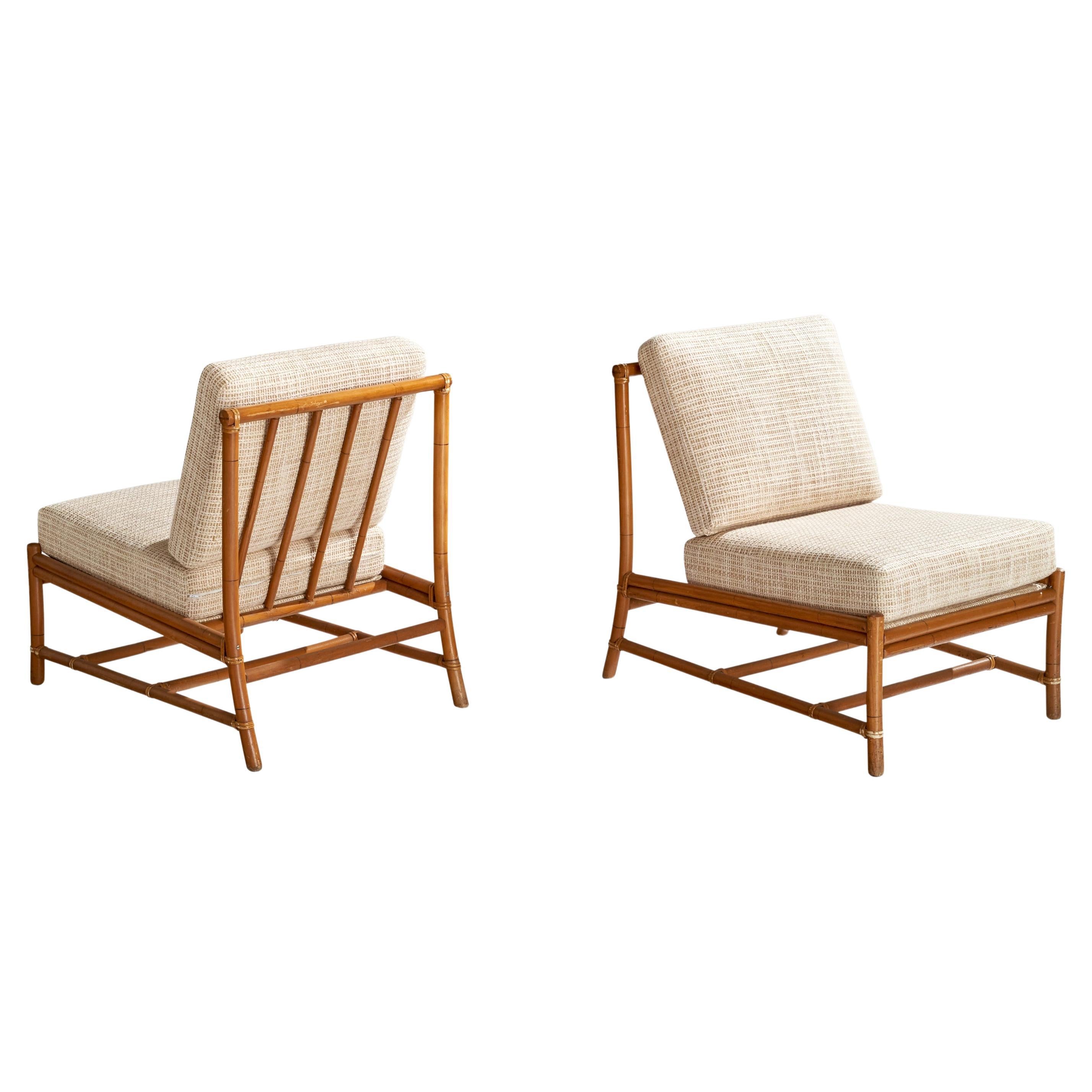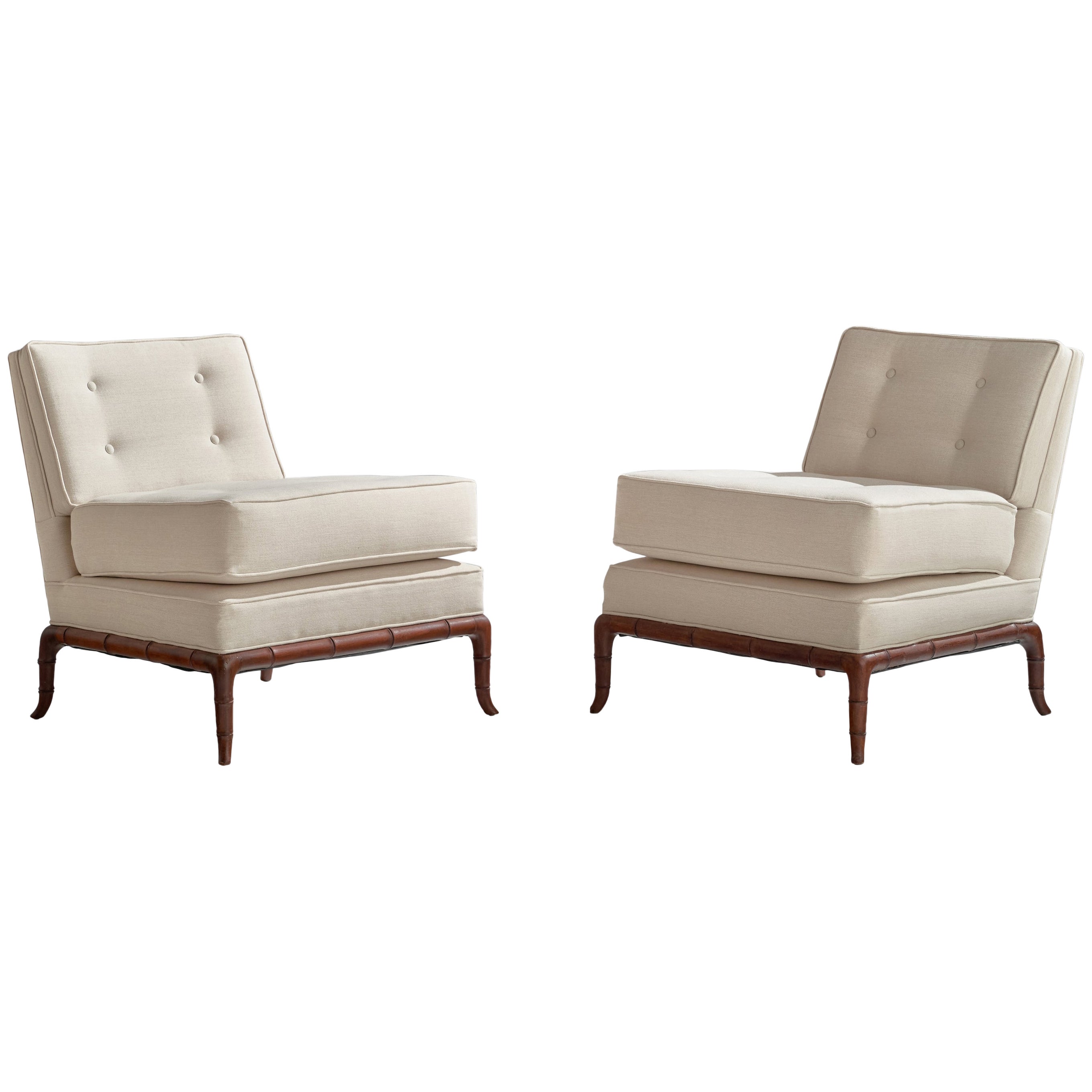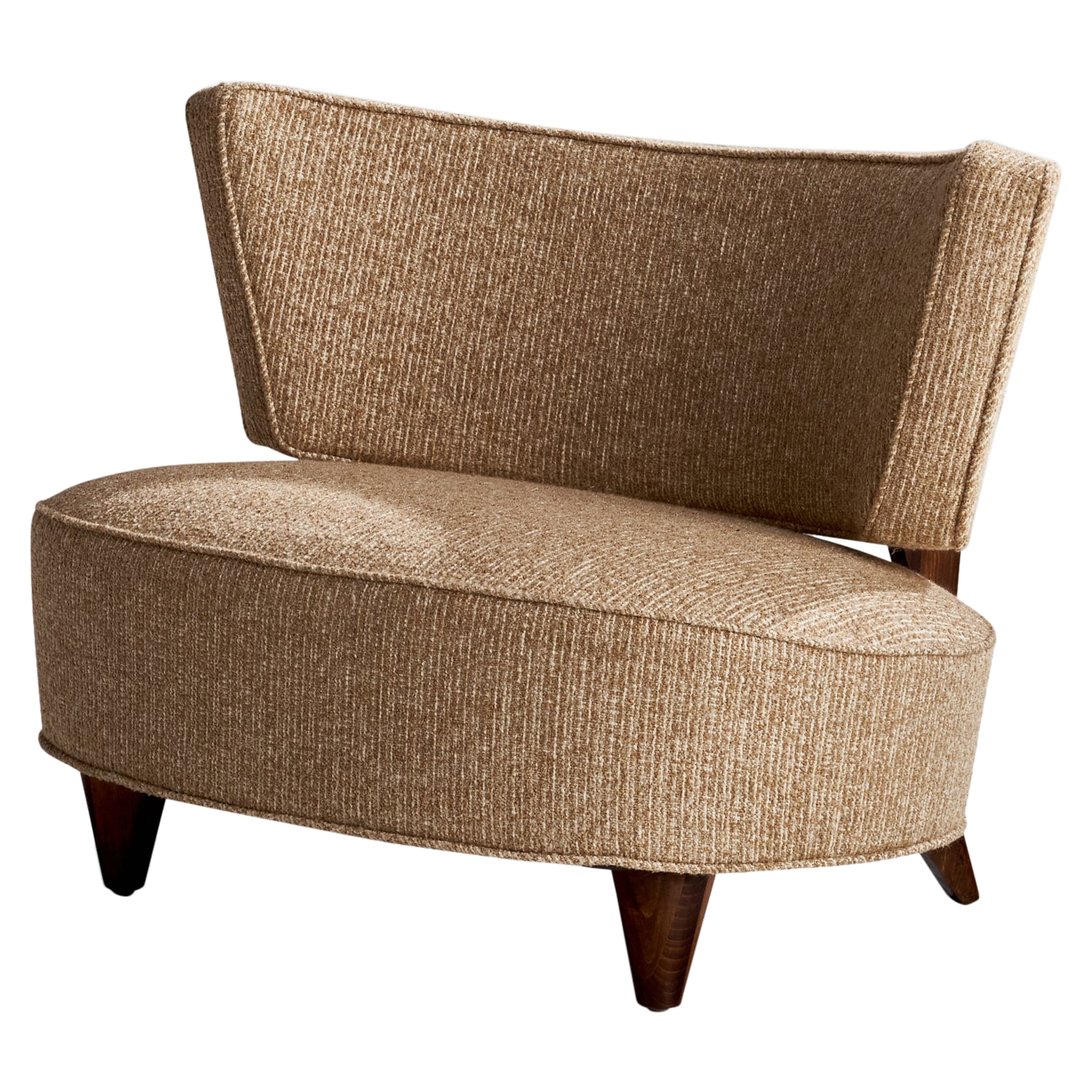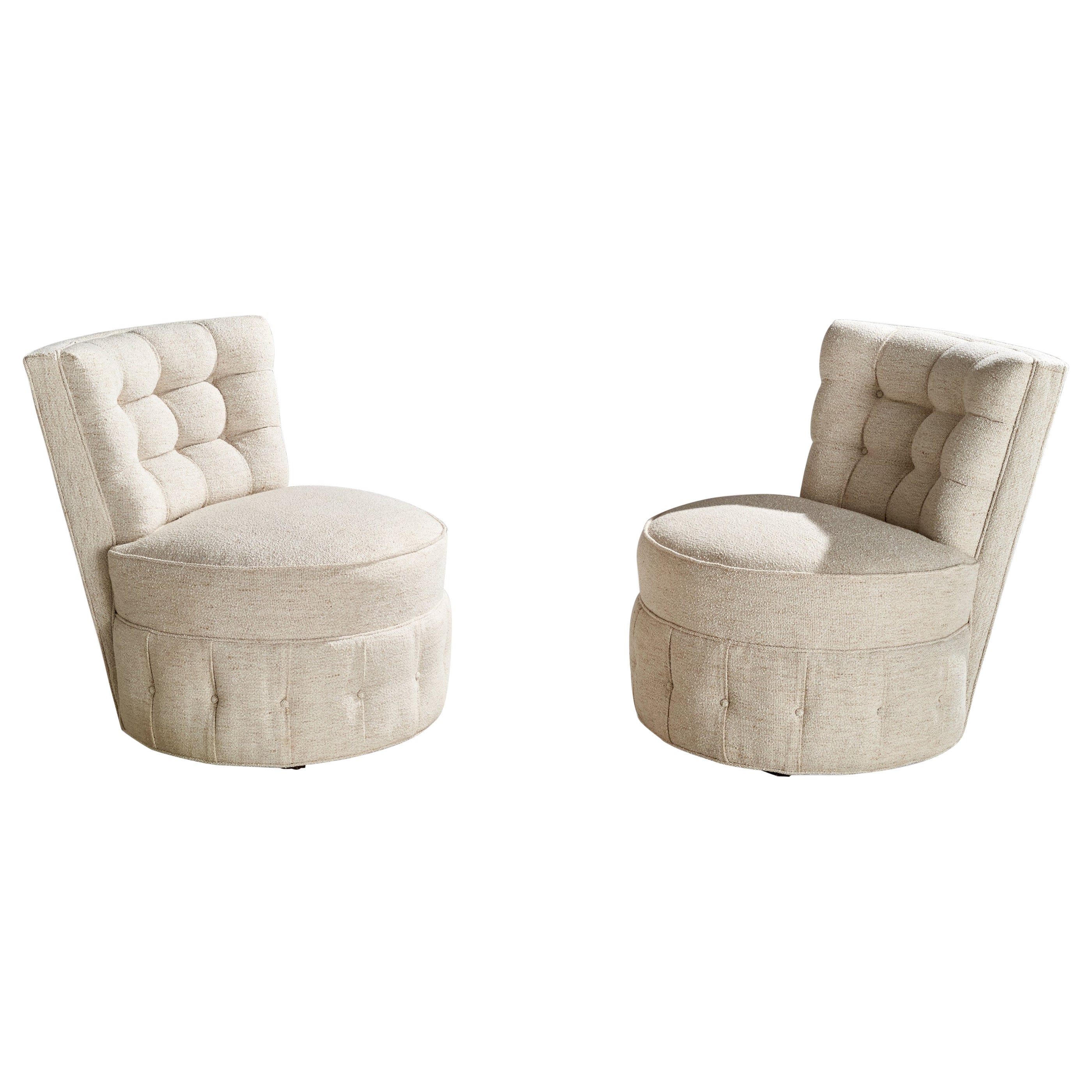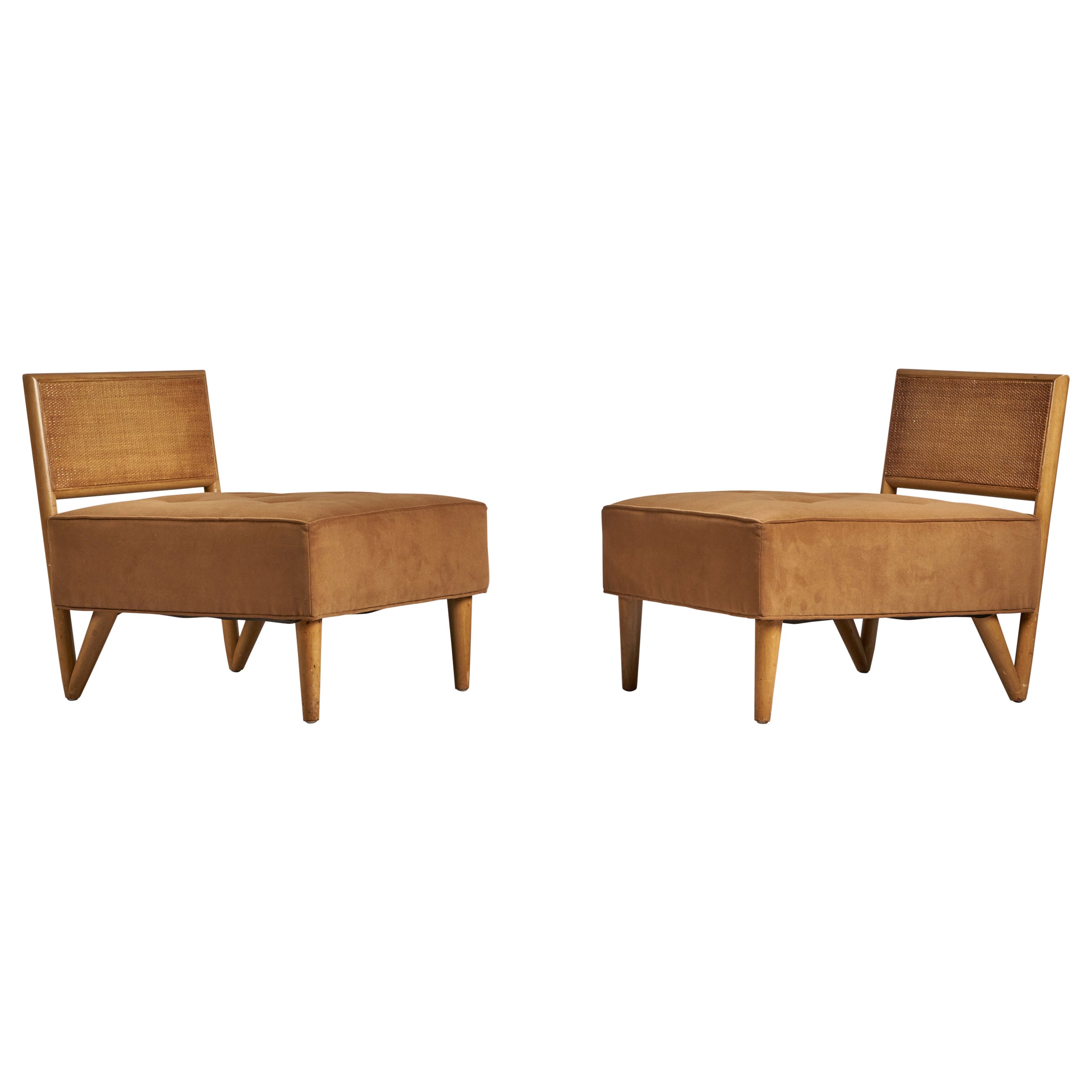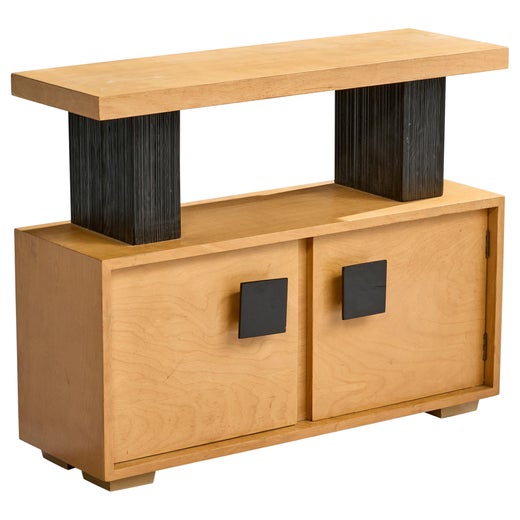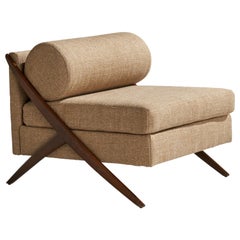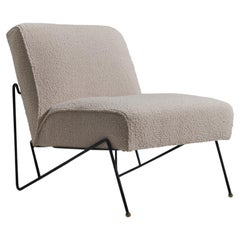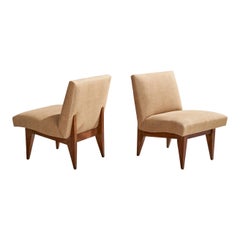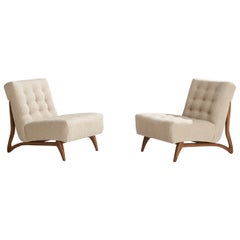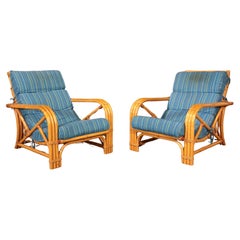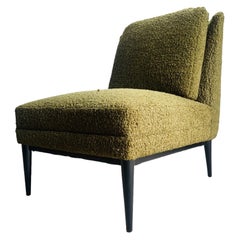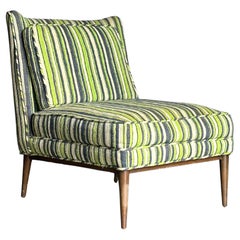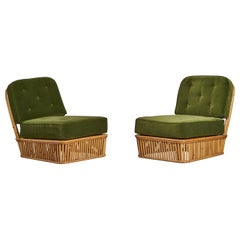
Paul Frankl, Slipper Chairs, Bamboo, Fabric, USA, 1952
View Similar Items
Paul Frankl, Slipper Chairs, Bamboo, Fabric, USA, 1952
About the Item
- Creator:Paul Frankl (Designer),Ficks Reed (Manufacturer)
- Dimensions:Height: 30 in (76.2 cm)Width: 24.25 in (61.6 cm)Depth: 34 in (86.36 cm)Seat Height: 15.5 in (39.37 cm)
- Sold As:Set of 2
- Style:Mid-Century Modern (Of the Period)
- Materials and Techniques:
- Place of Origin:
- Period:
- Date of Manufacture:1950s
- Condition:Reupholstered. Wear consistent with age and use. Reupholstered in brand new velvet.
- Seller Location:High Point, NC
- Reference Number:Seller: 107331stDibs: LU3228136149632
Paul Frankl
Born in Vienna, Paul Frankl came to the United States in 1914 as part of a wave of Central European design luminaries — among them Kem Weber, Rudolph Schindler, and Richard Neutra — who were drawn by the energy and optimism of the American scene. Prolific and protean, Frankl would go on to design furnishings that are emblematic of nearly every key stylistic chord in American modernism, from the streamlined Art Deco to free-form organic shapes.
Frankl's Skyscraper cabinets, bookcases and more — introduced in 1924 — are his earliest and best-known designs (and the work by which he is most often represented in institutions, such as New York’s Metropolitan Museum of Art). Tall and narrow, the pieces have staggered shelves meant to mimic the setbacks of Manhattan office towers. A later visually expressive line — the Speed chairs and sofas, which have a raked profile suggesting motion — links Frankl to Donald Deskey, Raymond Loewy and other creators of Streamline Moderne design.
Frankl moved to Los Angeles in 1934 and luxuriated in the climate and lifestyle. His designs became lighter and simpler and found an audience among the Hollywood élite. (Katharine Hepburn, Cary Grant and Fred Astaire were clients.) Fascinated by Asian arts, Frankl produced numerous pieces — tabletops with edges that curve upward; sofas, chairs and other seating with rattan frames — inspired by Chinese and Japanese forms and materials. In the 1940s, Frankl became one of the first designers to incorporate free-form, biomorphic shapes in his work, as well as novel upholstery fabrics such as denim and nubby wool.
Frankl biographer Christopher Long argues that the designer’s easy, elegant aesthetic had an enormous influence on movie set design. As the furniture below attests, Paul Frankl’s work is ready for its close-up.
Find vintage Paul Frankl tables, dining chairs, case pieces and storage cabinets on 1stDibs.
Ficks Reed
Somewhat of an overlooked icon of American design, Ficks Reed was founded by Louis Ficks in 1885 as the National Carriage and Reed Company, a New York purveyor of wicker baby carriages. By the turn of the century, however, the company had moved to Cincinnati, Ohio, and, under the auspices of Ficks Reed, began manufacturing furniture with wicker, rattan and bamboo.
Over the coming decades, Ficks Reed would benefit from an increased interest in Asian imports, as evidenced in everything from the growing popularity of chinoiserie wallpaper and Chinese porcelain to the Japanese influence in Frank Lloyd Wright’s modern architecture.
The brand was also bolstered by partnerships with several prominent architects and designers throughout the 20th century, including Paul László, Pipsan Saarinen Swanson — creator of the company's Sol-Air Group and elder sister of Eero Saarinen — John B. Wisner, Paul T. Frankl and Dorothy Draper.
Each Ficks Reed partner brought their unique sensibility to the designs — Swanson’s had skeletal frames while Draper, a largely forgotten decorator and pioneer of the Hollywood Regency style, favored more ornate detailing; László created low-slung seats — but all were rendered in the company’s signature wicker and bamboo.
Thanks in large part to the Draper relationship, Ficks Reed furniture has long been a fixture at The Greenbrier and Colony hotels, as well as other luxury properties including the Four Seasons, Ritz Carlton resorts and The Breakers in Palm Beach. In 2006, Draper protégé Carleton Varney continued his mentor’s legacy by debuting a new 20-piece collection for Ficks Reed based on her original designs.
A recent resurgence in the popularity of wicker and rattan has given way to newfound demand for Ficks Reed rattan chairs and other furniture in the secondary market, where original vintage pieces are often refinished, repainted or lacquered to further underscore the textural detail of their bamboo and rattan frames.
Find vintage Ficks Reed sofas, tables, armchairs and other furniture for sale on 1stDibs.
More From This Seller
View AllVintage 1950s American Mid-Century Modern Slipper Chairs
Fabric, Wood
Vintage 1950s American Mid-Century Modern Slipper Chairs
Iron
Vintage 1950s American Mid-Century Modern Slipper Chairs
Fabric, Oak
Vintage 1950s American Mid-Century Modern Slipper Chairs
Fabric, Walnut
Vintage 1950s American Mid-Century Modern Slipper Chairs
Fabric, Wood
Vintage 1950s American Mid-Century Modern Slipper Chairs
Aluminum
You May Also Like
Mid-20th Century Mid-Century Modern Chairs
Bamboo, Rattan
Mid-20th Century American Mid-Century Modern Slipper Chairs
Fabric, Bouclé
Vintage 1950s American Mid-Century Modern Slipper Chairs
Wrought Iron
Vintage 1950s American Mid-Century Modern Slipper Chairs
Walnut, Upholstery
Vintage 1970s American Mid-Century Modern Lounge Chairs
Upholstery, Wood
Vintage 1950s American Mid-Century Modern Slipper Chairs
Fabric, Wood
